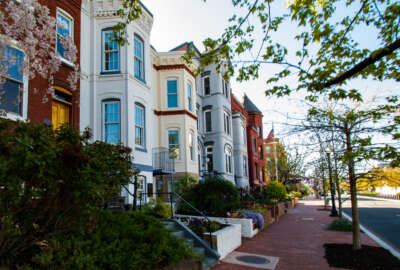
Dude, don’t get pitted in the chunder!
Like ocean waves, the unpredictable pandemic means agency reentry plans need to stay loose.
It’s hard to believe, but the film “The Endless Summer” first screened in 1966. The documentary followed two surfers — one of whom is aptly named Robert August — traveling around the world to keep surfing wherever summer was occurring.
To someone who already preferred summer to winter by the time I was 11 years old, the movie’s idea appealed. Follow the summer, for whatever you want to do. When, by late August, the rustling leaves take on a certain dry quality, I always sigh to myself that, alas, summer is not endless.
This year, those privileged to obtain a COVID vaccination early, did so around the time when, in D.C., the cherry blossoms come out. The Biden administration had made vaccination a high priority, promising to get a million people a day vaccinated. It felt like the cherry blossoms marked the flashpoint for national recovery. It looked like the summer would bring a return of the old normal.
Somewhere along the line, though, the growth in the national vaccination rate started to level off, and the virus itself morphed into a scare. In some places the hospitals are again stuffed to the gills. Masks are back. Now the seeming certainty of returning to the office is sliding away like a missed wave. So neither endless summer nor normal autumn appears likely.
Surfers might call the situation “messy.”
The multi-agency task force on reentry has gamely tried to keep up with the dynamic situation. But greater uncertainty has supplanted the assumptions of ever safer conditions as described in the June 15 White House memo. Only a month since the task force started to evaluate agency reentry plans submitted in early July, a germ called the delta variant has infected people all over, and no one can really say for sure how bad it is. NIH Director Francis Collins warns in TV interviews that although the vaccines seem to protect people from the worst of delta effects, delta may not be the last offshoot that will emerge.
So expect “maximum telework flexibility” to continue indefinitely. I predict, that will be the gist of whatever policy may emerge in the next few weeks.
People have reconditioned themselves. Early on, working at home felt like a drag, and people wanted to get back to the office. Now, for many, going to the office seems like a drag. Or unsafe.
What should agencies do, then?
For one thing, they’ll need to keep investing in information technologies that mitigate the effects of remote working relative to the collaboration deficit. Some work situations operate just fine with people scattered. The most-often-cited telework example, the U.S. Patent and Trademark Office, has had most of its examiners work remotely for years with high-end notebook PCs and secure, reliable connections. Patent application examining might involve a couple of examiners cross-checking one another, but in general it’s solitary research.
But much work requires groups or teams to operate, analyze, troubleshoot, and plan for missions or products. I’m sorry, but no online collaboration tool so far developed replaces the easy back-and-forth of a culturally healthy physical workspace. To be sure, we can’t live without Teams or Zoom or whatever.
A few days ago I was speaking with Microsoft Federal Chief Technology Officer Susie Adams. She made a comment that resonated. Namely, that many cloud and other IT initiatives have focused on productivity of the individual. Now, she said, the IT industry needs to work on the next generation of group productivity applications.
In my own view, the nut of the problem centers on the orientation of the current generation of tools towards The Meeting. Let’s arrive at the (virtual) conference room at 10:30 and leave at 11:15. They do that remarkably well. But they don’t come close to simulating an office environment. Maybe that will require holographs or something.
Yesterday afternoon a few of us managers at Federal News Network and WTOP had a small luncheon with our general manager and the three summer interns we’ve been employing. Luckily, they’ve been able to experience their internships with us on premise, in our conjoined newsrooms. They were able to learn not only the technical skills of radio and online reporting, but also the human relations glue that makes for a cohesive, fulfilling workplace.
I’ve never set foot on a surfboard. But watching, it seems like a sport that requires a lot of agility, quick thinking and ability to react to fast-changing situations. To say nothing of a lot of nerve. That’s what it’ll take to keep ahead of whatever waves the pandemic serves up in the suddenly unpredictable months head.
Nearly Useless Factoid
By Alazar Moges
While many Olympic athletes have competed in both the summer and winter games, American boxer and bobsledder Eddie Eagan, along with Swedish figure skater Gillis Grafström, are the only two Olympic athletes to win gold medals in both. Eagan is the only athlete to have won gold in two separate disciplines, while Grafström is the only athlete to win gold in individual events.
Source: Olympic Games
Copyright © 2025 Federal News Network. All rights reserved. This website is not intended for users located within the European Economic Area.
Tom Temin is host of the Federal Drive and has been providing insight on federal technology and management issues for more than 30 years.
Follow @tteminWFED





